From frolicking humpback whales to minuscule jumping spiders, atmospheric landscapes and the wonders of the night sky, the 2024 Australian Geographic Nature Photographer of the Year showcases the best nature imagery from across the Australian bioregion, encompassing Australia, New Zealand, Antarctica and New Guinea.
The 92 finalists – whittled down from nearly 1900 entries by 442 photographers across 12 countries – were announced on Friday; the pick of them appear in a picture spread in The Weekend Australian Magazine today.
The annual photography competition – a collaboration between the South Australian Museum and Australian Geographic – has run for over 20 years. The winners will be announced on August 29, and a free public exhibition of the finalists will open at the South Australian Museum on August 31.
This competition this year comprises ten categories: Animals in Nature, Aerial, Astrophotography, Macro, Landscape, Threatened Species, Monochrome, Our Impact, Junior and Portfolio. “From jaw dropping landscapes, curious creatures and celestial skies, this year’s shortlist captures nature in its rawest and most vulnerable form,” says Dr David Gaimster, Director of the South Australian Museum. “The competition has grown and evolved over the past two decades and this year we introduce the well-received aerial category capturing never before seen moments from above.”
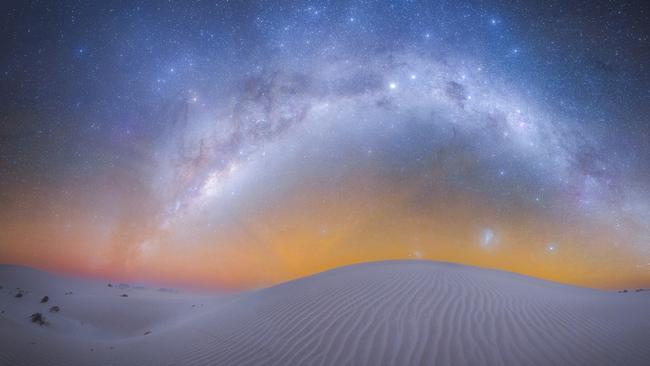
Yanerbie mist
Will Godward
Will Godward competed in rifle shooting at two Olympic Games – London and Rio. These days, he shoots the night sky. He captured this panorama at the Yanerbie Sandhills near Streaky Bay on the Eyre Peninsula; a sea mist was rolling in, lending an ethereal quality to the grand arc of the Milky Way and the faint emission of atmospheric light known as airglow. “I’ll do an all-night session once a month,” says Godward, who works for a telescope wholesaler. “I have three young kids now so there’s no time to shoot in the day!”
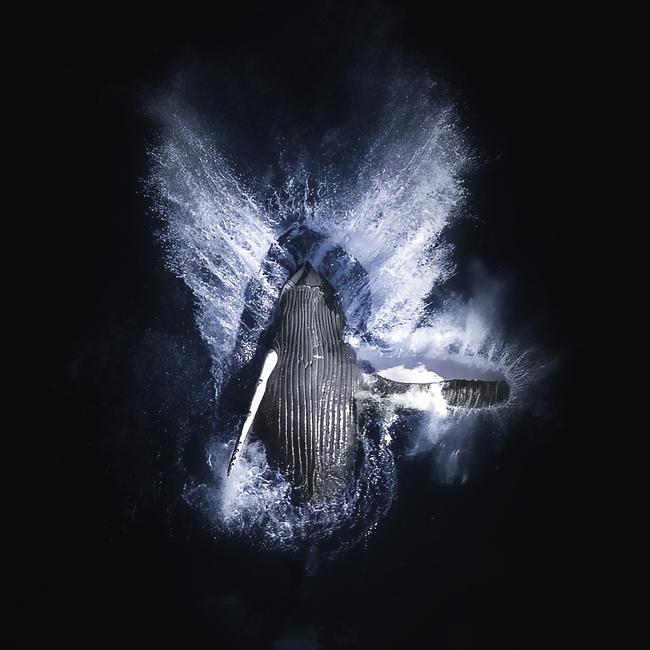
Angel Wings
Tim Burgess
Burgess, a firefighter from Canberra, photographed this juvenile humpback whale off the coast of Ulladulla, NSW, with his drone. “It was with its mother, migrating back down from the tropics,” he says. “This was only 100m or so offshore – humpbacks with young like to travel close to shore, where there’s more protection from predators.” The young whale was jumping out the water repeatedly, “having a lot of fun”, Burgess says. His drone, hovering at 100m, captured this moment as it splashed down. “The spray looks like angel wings, hence the title.”

Tailings Dam
David Dahlenburg
“Grotesque beauty” is how David Dahlenburg describes his aerial image of a tailings dam at a gold mine in outback South Australia. Waste slurry from the gold recovery process is pumped into the tailings dam; the vibrant colours are from chemicals and minerals in the slurry. Dahlenburg, who works in the Barossa wine industry, has an ongoing art project with two colleagues called Altitude South, shooting remote South Australia from the air. “The colours are real,” he says of this shot. “People say, ‘Wow, that’s beautiful’ – but when they find out what it is, they have mixed feelings.”
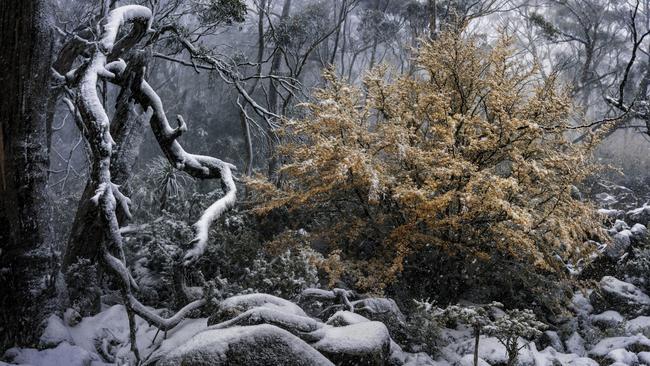
Aurum
Benjamin Alldridge
The autumnal transformation of Nothofagus gunnii, aka the fagus or tanglefoot tree, is celebrated in Tasmania. “Over a few weeks, the leaves of these deciduous trees turn from green to a blazing gold,” says Benjamin Alldridge, a software engineer who moved to Tassie from steamy Brisbane seven years ago. He captured this image in a forest near Mount Field during a howling snowstorm. It was a serendipitous moment. “Sunlight suddenly started punching through the canopy behind me and lit up the fagus’s leaves,” he says. The title of his shot? It’s the Latin word for gold.
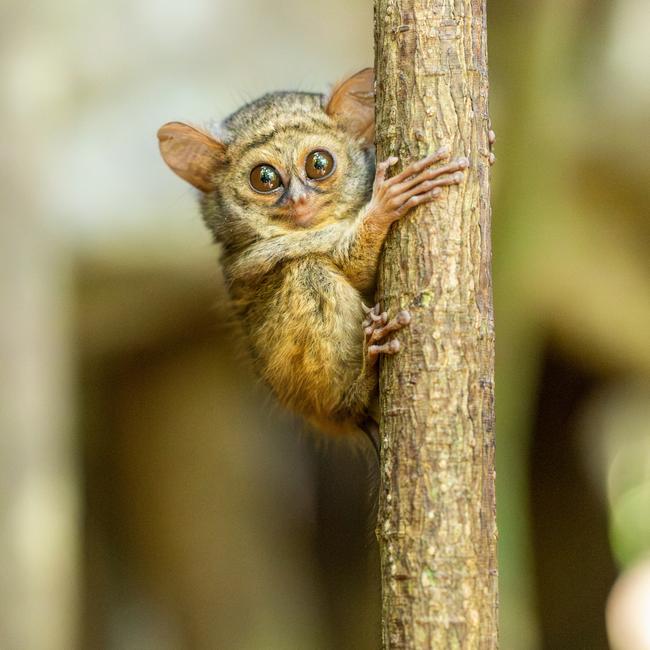
Innocent stare
Jari Cornelis
“They’re the gremlins of the forest,” says Jari Cornelis of the tarsiers he encountered at a nature reserve in Sulawesi, Indonesia (which is on the Australian side of Wallace’s line, and therefore eligible for this competition). Tarsiers are tiny primates that leap between trees, hunting insects and other small prey. Long fingers give them a good grip on the tree trunks. “This one is a juvenile – it would fit in the palm of your hand – and was just old enough to start venturing away from its mother, which was nearby,” says Cornelis, who works as an environmental consultant in Perth.
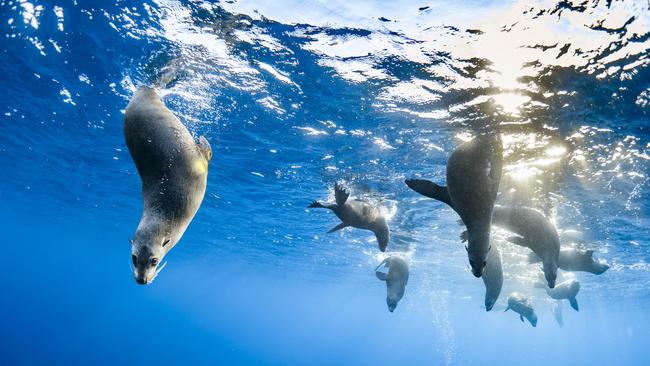
View from below
Vanessa Torres
It was an early morning in June, and bitterly cold. These fur seals at Montague Island, off Narooma on NSW’s south coast, had just woken up and slipped into the brilliantly clear blue water. “They were just bobbing on the surface, without moving around much,” says Torres, who runs an underwater photography business in Sydney’s Bondi. “It was like they hadn’t quite woken up yet, and perhaps they were still adjusting to the cold of the water. As I approached underwater, they began ducking their heads under the surface to check me out.”
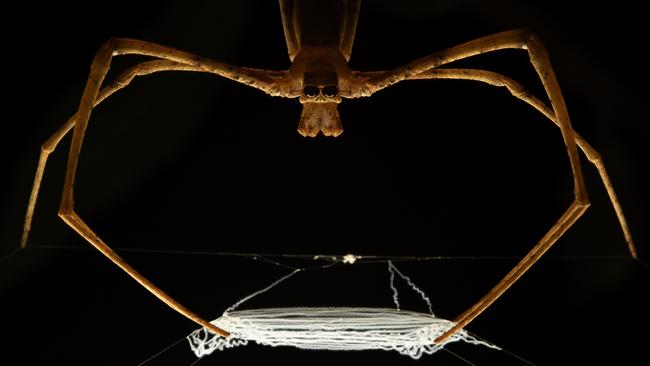
Symmetry of lurking
Adam Javorcik
Net-casting spiders, also known as ogre-faced spiders on account of their looks, have a highly unusual way of hunting: they spin a small rectangular “net” then hold it in their delicate front legs as they hang by their back legs over a spot where insects are likely to wander. When an unsuspecting prey item walks beneath them, these spiders quickly stretch the net and drop onto their victim, bundling it up in the net.
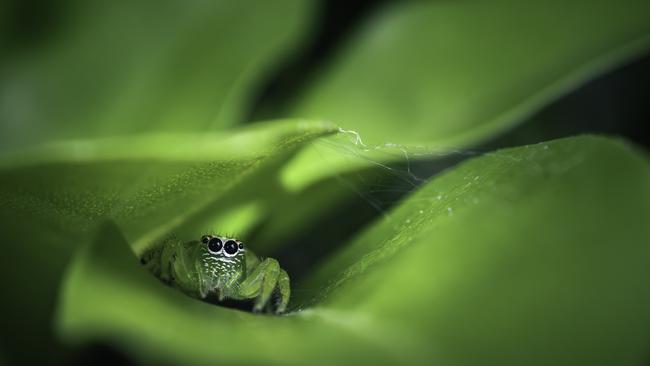
Nest of silk
Oliver Lacey
Oliver Lacey, a 15-year-old from Brisbane’s southern suburbs, has an interest in macro wildlife photography – and he never has to go far to indulge it. “I found this jumping spider in a hedge in the back yard,” he says. These tiny spiders – this one is about 0.5cm across – have excellent vision, thanks to their four pairs of eyes, and hunt by jumping on their prey, hence the name. They’ll spin a little nest for shelter, typically incorporating leaves, as here.

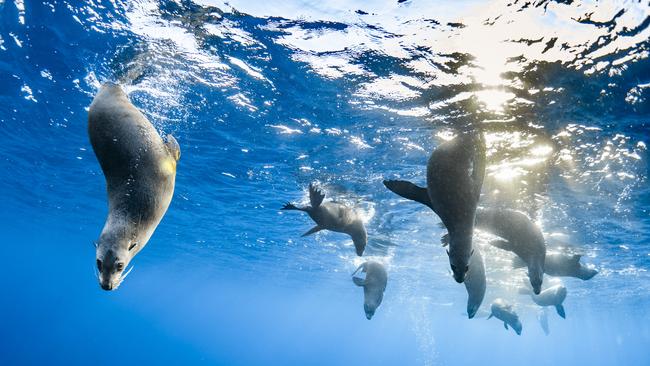

Add your comment to this story
To join the conversation, please log in. Don't have an account? Register
Join the conversation, you are commenting as Logout